The Grand Canyon State Networks to Close the Literacy Achievement Gap Between SWDs and Their Peers
Since becoming a CEEDAR intensive technical assistance (TA) partner in 2015, Arizona has made significant progress toward its main goal of preparing teachers to use data to improve the literacy outcomes of students with disabilities (SWDs). The CEEDAR Center helped the Arizona Department of Education (ADE) and partnering institutions collaborate to prepare teachers and align related initiatives. The IHEs participating in the reform efforts include Pima Community College (PCC), Rio Salado Community College (RSCC), Arizona State University, and Northern Arizona University (NAU).
The Arizona State Leadership Team’s (SLT) decision to focus reform efforts on preparing teachers to engage in data-driven decision making to improve literacy outcomes for SWDs was in itself a data-driven decision. Two members of the SLT, Elizabeth Hoffman (special education instructional liaison at RSCC) and Kathleen Puckett (associate professor of special education at ASU), expressed that state-level achievement data revealed that many SWDs lacked literacy proficiency. Elizabeth pointed out that the team’s goal also stemmed from SLT members understanding the link between literacy and the need to improve students’ college and career readiness.
Systemic educational reform is never easy, and the Arizona SLT has faced challenges. Large-scale efforts often move slowly, which can frustrate people who care deeply about students. Nevertheless, with CEEDAR support, the team has made progress. The Arizona-CEEDAR partnership forged essential communication networks between the stakeholders that Elizabeth described as “critical for sharing information and sustaining the reform work.” Kathleen shared similar sentiments regarding the role of CEEDAR in creating the networking that will be crucial for implementing and sustaining reform efforts. She described the networking opportunity as a critical element that has emerged from their reform efforts. She also emphasized that “networking between the colleges and universities is one of the best things that has come out of this work, and CEEDAR facilitated this network.” She avowed that through the Arizona-CEEDAR partnership, networking opportunities have emerged not only across institutions, but also within institutions between general education, special education, and leadership preparation programs. “It is the sort of cross-pollination that is doing well for all of us,” she declared. These networks are vital because statewide reform can only move forward through continued collaboration.
Both Elizabeth and Kathleen are optimistic about the Arizona SLT’s ongoing reform efforts. They both conveyed that alignment between the goals of the state and the goals of the SLT is essential to sustaining the reform efforts. They also believe that the strength of the critical partnerships they have formed among the IHEs, ADE, and local education agencies (LEAs) will continue to grow given the improvements to the communication network as a result of the CEEDAR partnership.
Questions or Comments?
Contact us at ceedar@coe.ufl.edu





